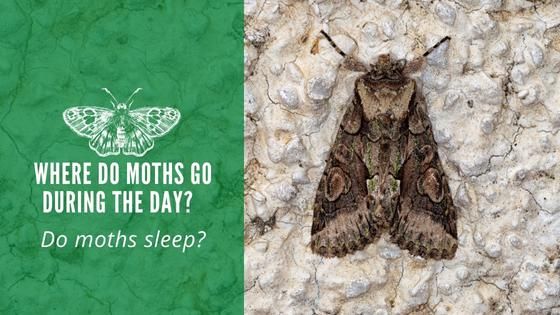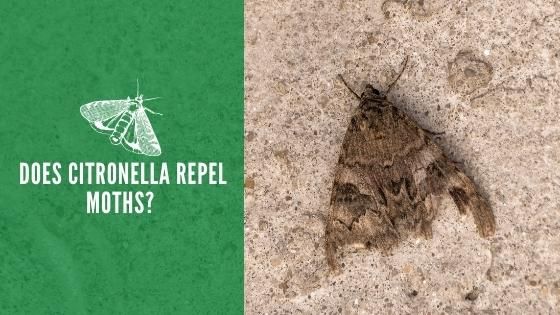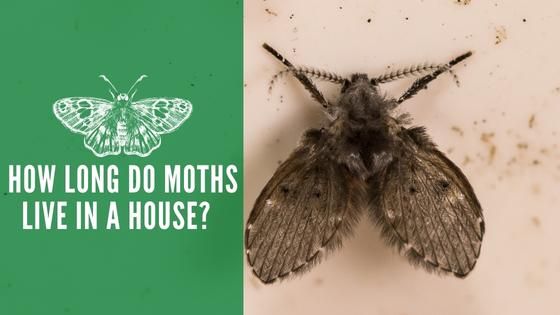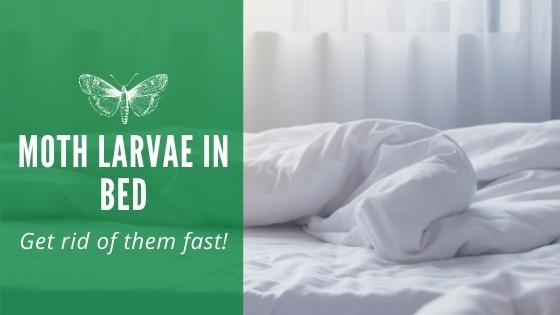Where Do Moths Go During the Day?

Moths are often considered to be the butterfly’s less attractive cousin since they both belong to the order Lepidoptera. While a butterfly tends to be smooth, slim, and colorful, you’ll notice that moths have stocky, furry bodies that usually come in dull shades such as brown and grey.
Unlike butterflies, moths are typically creatures of the night. Figuring out what they do all day can help you manage an invasion.
Where Do Moths Go During the Day?
After flying around all night, moths need somewhere safe where they can go to renew their energy. Since moths cannot fend off predators, they prefer to find somewhere to rest where birds, bats, and other critters won’t be able to find them.
Once daylight arrives, moths will look for a dark, quiet, and dry place. Staying away from places where they might get wet helps them to still be able to fly if they do get discovered. Outside, this might mean they find a resting spot in the shade of a tree or building where their grey or brown coloring provides them with camouflage.
Do Moths Sleep?
If you discover a moth in the middle of the day, you might notice that they are very still. Moths enter a sleep-like state, just like humans. But, moths’ sleep patterns are slightly different. A moth can enter a period of non-activity that is known as torpor.
During a torpor state, their body’s rhythms slow down. While they’ll react to a strong stimulus, they won’t generally rouse to changes in their environment, such as a slight breeze. This state seems like hibernation, except that torpor doesn’t depend on weather or seasons.
Moths will slip into this state anytime they want to reenergize during the day, and you’ll find it hard to know if they are asleep since they don’t have eyelids to open and close.
As for whether or not moths dream, no one knows. However, it is clear that they can rapidly spring back to an awake state if they sense a threat in their immediate surroundings.
Are Some Moths Active During the Daytime?
There are some types of moths that are diurnal, meaning that they are active during the day. These moths are usually a little more colorful than the nocturnal ones.
You can also sometimes catch moths flying around at dusk and dawn. For example, the Sphinx moth likes to use its unusually long proboscis to get nectar from night-blooming flowers that are just hitting their peak before the moonlight starts shining through.
Where Do Moths Hide In the House?
Moths aren’t typically picky about which part of the house they sleep in, as long as it’s safe and away from potential predators. Usually, they’ll go to the least accessed areas where they feel like they won’t get disturbed. They’ll also look for places to lay their eggs with good food sources for their larva.
Pantry moths hide where you would most suspect them to be sleeping. You’ll find other types of moths in similar spaces. Closets are a prime place for moths to go during the day, especially if yours lacks a window and is rarely used.

A moth could also make its way into the attic, either from an interior door or a hole in the roof. Attic infestations could go undetected for quite some time if you rarely go upstairs. The same is also true for moths that choose to go into a basement or rarely used guest room.
If you decide to go on a moth hunt, you’ll need to pay close attention to each area you inspect. Moths don’t typically hide on the most visible surface of a wall or shelf. Instead, they’ll be way up high in a corner most of the time.
Moths can also decide to climb into the folds of fabric hanging at the back of a closet. There, they can choose to lay their eggs so their young will have instant access to food.
What Makes Them Attracted to Light?
If moths prefer to spend their busiest hours in the darkness, then it’s natural to wonder why they tend to get so captivated by lights.
There are several different theories regarding why moths are drawn to lights. Some people believe that the lights are disorienting to the moths and throw off their navigation. This could explain why they seem to fly around lights haphazardly and to the point of risking their safety.
Others think that the light may emulate the ultraviolet colors of plants that attract moths or even cause them to mistake it for the infrared reflection associated with moth pheromones that lead them to find a mate.
Whatever the reason, you might find that switching on a light helps coax a moth out of its hiding place. Or, you may want to use this phenomenon to practice pest prevention around your home. Turning off unneeded porch lights can keep them from flying inside if you need to open a door.
Why Are Moths a Problem If They Rarely Eat?
For the most part, adult moths are primarily focused on survival and reproduction. Some moths eat the nectar from flowers, but it isn’t the adults that do the most damage. Instead, it is the moth’s offspring that can wreak havoc around your house. Once larvae emerge from their eggs, they get to work feeding on fabric, dry goods and other materials that help them plump up and prepare for their metamorphosis.
Moths seem like the least dangerous of all the potential pests you can find in your home. They don’t bite, sting, or do too much damage to your property. However, they can become a big problem if you have multiple moths that reproduce and leave larvae that can eat through your pantry foods and chew holes in your favorite sweater.
Other pests also love finding a building with a steady flow of their favorite meal. Bats, birds, and even spiders will set up camp near areas with many moths.
While finding one moth hiding in a dark closet corner might not be a big deal, you’ll want to take action to remove a bigger infestation before it leads to more frustration.




